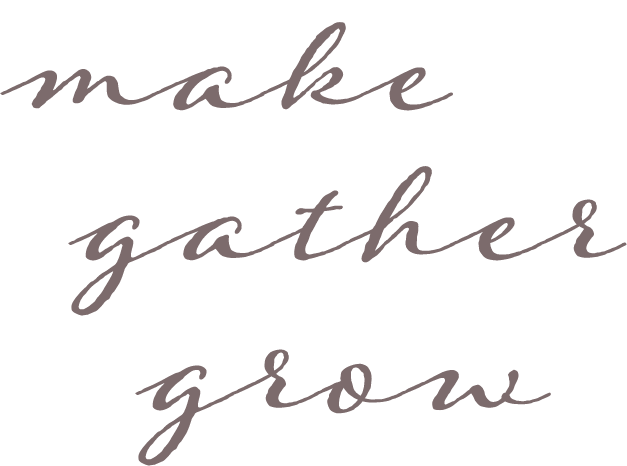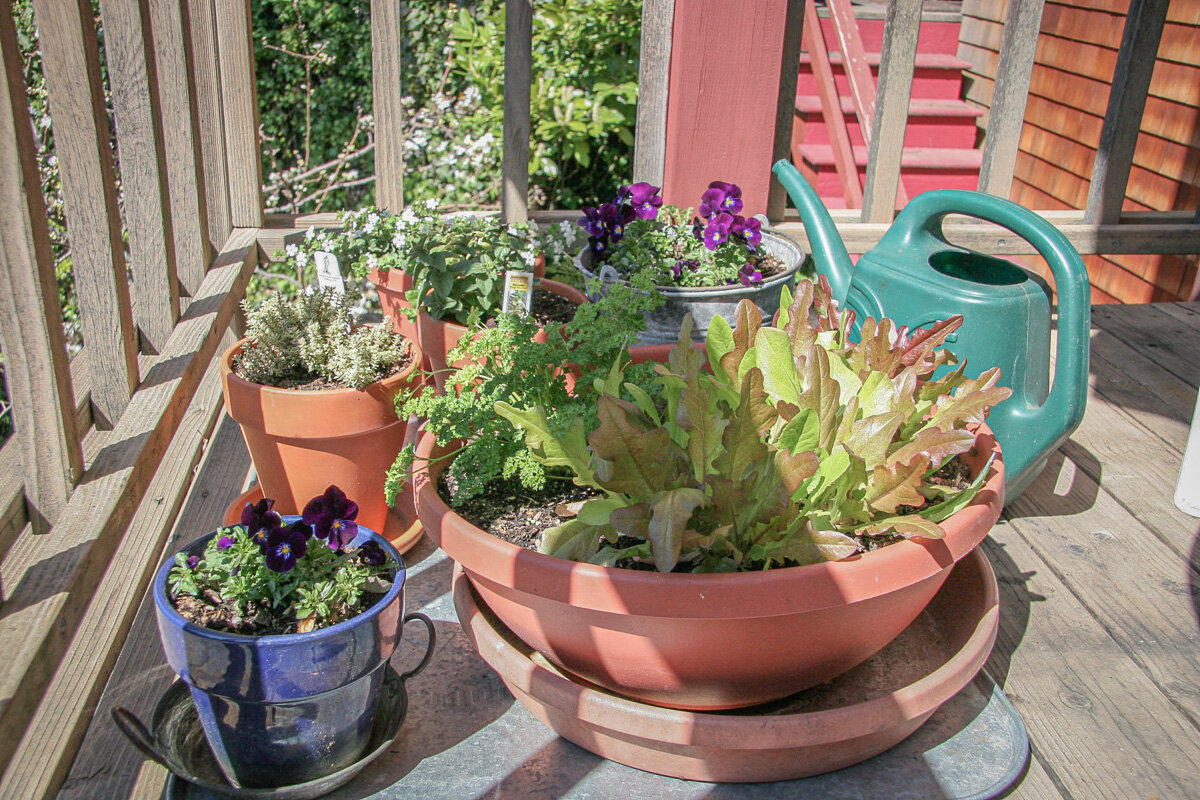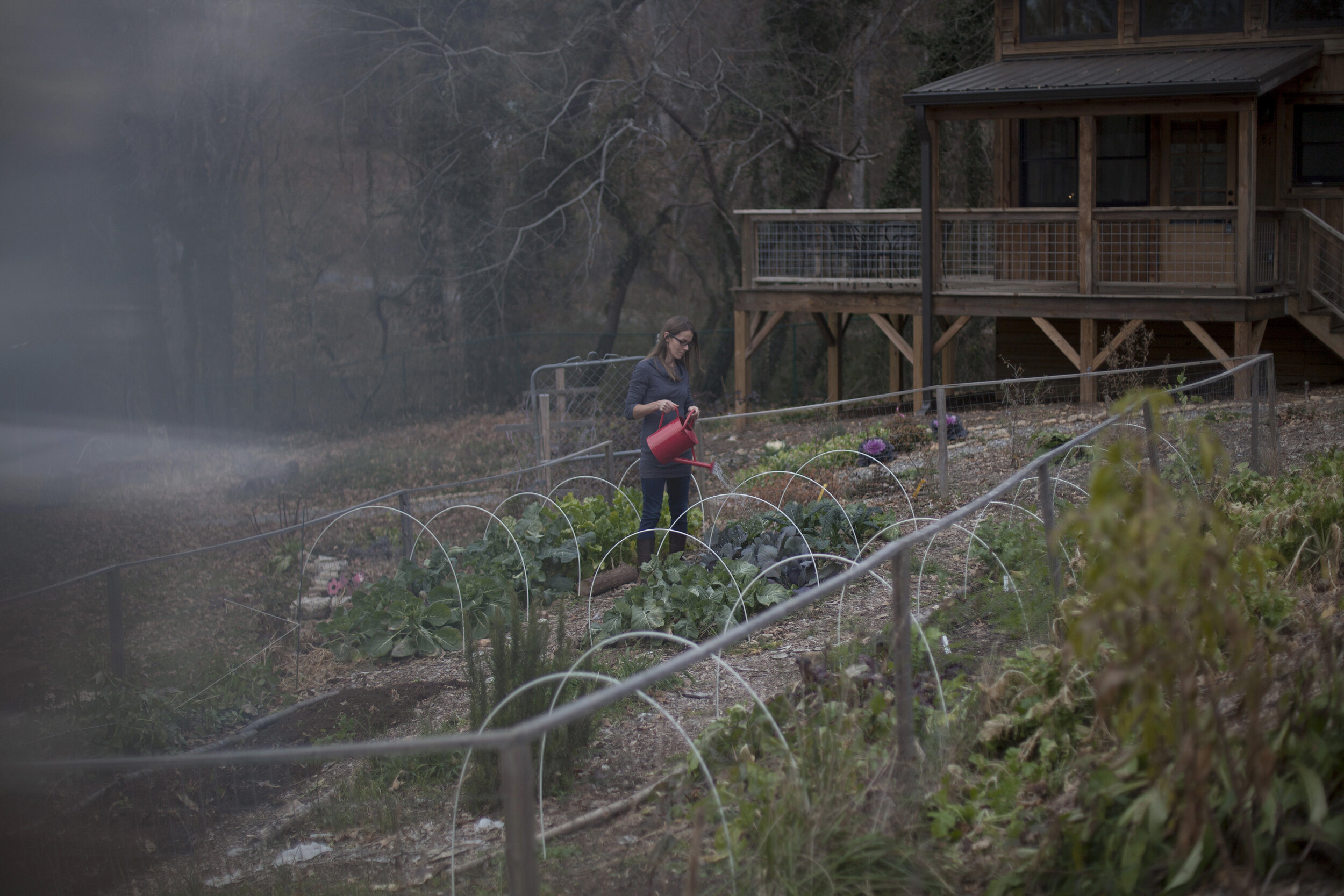Love letter to new gardeners
To plant a garden is to believe in tomorrow.
— Audrey Hepburn
Dear new gardener,
Starting out gardening is totally overwhelming. Where do I start? There's so much information out there and so much I don't know. I can't tell a cucumber seedling from a pepper seedling. I don't know the Latin names of vegetables.
I know all too well how that feels. I wasn’t always a gardener. I didn’t always know how to do this.
I now grow food on a third-acre lot, but this is where I started, about 10 years ago:
And because I remember being a new gardener, I know that gardening absolutely can be learned.
If you want practical tips, like finding planting calendars or choosing vegetables that grow fast or provide maximum calories, scroll to the bottom of this post. But what I want to offer first is some advice about the beginning gardener's mindset. For along with good compost and non-GMO seeds, you also need some patience, self-compassion, and a good dose of humor.
It takes time, and that's okay.
When I planted the first garden of my adult life — patio containers for some salad greens and herbs — I read somewhere that gardening involves a steep learning curve. To be precise, the book said, it takes 10 years to learn how to garden. You can't speed-date nature. You learn simply by experience, by making mistakes. There will always be a new unexpected challenge each year: a summer of nothing but rain, late frosts, a new pest, a new crop.
I remember despairing. Ten years! That’s too long! (Patience was not one of my virtues then and still isn't.) I felt embarrassed about all that I didn't know, and yes, I was wondering about all those Latin names.
But now that I've been gardening almost a decade, I can say that confidence in gardening really comes simply from doing it over and over again, year after year. You make mistakes and learn from them. But. It. Is. All. Worth. It. That feeling when you make your first meal entirely from homegrown ingredients, or grow your first artichoke or braid of garlic — you can't buy that in a grocery store produce aisle. In fact, a lot of the food you will go on to grow will also be food that you simply cannot buy in a grocery store.
Whether this is your Year 1 of gardening, or Year 10, there’s only one way to become a better gardener: to garden today, and the next day, and the day after that.
Start small.
You don’t need to have a lot of land to garden. You don’t need to own land to garden. And no, you don’t need to plant a jaw-dropping food forest your first year.
Start with some potted herbs, or salad greens on the windowsill. If you do have a backyard, build a couple of 4x8 raised bed boxes and start with that. The following year, you can add some blueberries in half wine barrel containers and try your hand at double-digging or sheet mulching.
As one of my permaculture teachers, Marisha Auerbach, puts it: Start small, and then roll over the edges. If you take on too much all at once, you’ll only become discouraged if you can’t maintain it all, and you might give up. Take on what you can manage, and then expand.
Invest in good soil.
To grow healthy, nutrient-dense, delicious vegetables and fruits, you need good soil. This is the one part where I wouldn't recommend skimping.
You can build good soil on a low budget over time; my two favorite ways of building good garden soil are sheet mulching and no-till gardening. But both of these take time. If you want to fast-forward things, invest in a bulk order of compost (by the cubic yard) from the best source you can find locally, and mix the compost with your existing soil to fill up raised bed frames or to establish beds. Start a home compost pile to grow your own soil fertility going forward.
Grow foods you actually like to eat.
If you don’t like kohlrabi, don’t grow kohlrabi. If pesto on a summer day is what makes you happy, plant as much basil as you can fit in. You get my point.
You don't have to know everything.
You don’t have to read every gardening book on the planet. Find your 2-4 go-to resources that are like a couple of good friends you can turn to. (See my suggestions below.)
If a specific problem comes up, you can always find help on Google or Youtube.
Don’t fret about all that you don’t know yet. It will come. If you fall in love with gardening the way most people do, you will find yourself gravitating towards your garden beds, checking on the seedlings. You don’t need to memorize the Latin names of the different vegetable families. Over time, you’ll start to notice that turnip seedlings look exactly like broccoli and kale seedlings, and beets and Swiss chard look similar too, and so do carrots and Queen Anne’s lace. Over time, the family tree of plants will become familiar to you because the characters in it pop out of the soil every year to greet you, like old friends.
Dear new gardener, I know it’s overwhelming. But I'm willing to wager that 5 years or 15 years from now, you will not regret learning how to garden. Enjoy this time of apprenticing and growing. Put your hands in the dirt, be curious, and have fun.
And now...
My top resources for the new gardener
Online trainings and inspiration:
Earth Repair Radio: Marisha Auerbach on Growing Urban Food Security the Permaculture Way
Vegetable Gardens for Beginners — a great concise article
My go-to gardening books:
The Backyard Homestead by Carleen Madigan
The Self-Sufficient Life and How to Live It by John Seymour
Grow, Cook, Eat: A Food Lover's Guide to Vegetable Gardening, Including 50 Recipes, Plus Harvesting and Storage Tips by Willi Galloway
Other resources:
A great post on Growing Staple Crops for a Calorie-dense Harvest
Let nature help you! Look into companion planting




